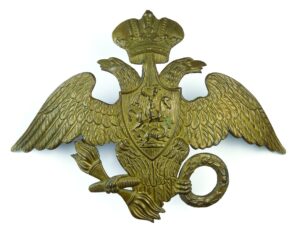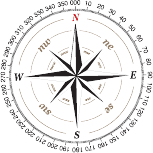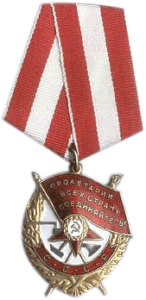Bagramyan, Ivan Khristoforovich, also known as Hovhannes Khachaturi Baghramyan born 20-11-1897 in Yelizavetpol, Russian Empire. His parents, Mariam and Khachatur Bagramyan, were ethnic Armenians originally from the village of Chardakhlu. Bagramyan’s paternal grandfather came from the village of Koti. While Bagramyan’s father went to work all day at the local railway station, his mother stayed at home to take care of her seven children. Bagramyan’s parents decided to enroll him at a recently opened local two-year school because they could not afford to send him to the local gymnasium.
His parents, Mariam and Khachatur Bagramyan, were ethnic Armenians originally from the village of Chardakhlu. Bagramyan’s paternal grandfather came from the village of Koti. While Bagramyan’s father went to work all day at the local railway station, his mother stayed at home to take care of her seven children. Bagramyan’s parents decided to enroll him at a recently opened local two-year school because they could not afford to send him to the local gymnasium.
Graduating in 1912, Ivan, whom everyone affectionately called Vanya, followed his father and his brothers in a path in rail work, attending the three-year railway technical institute located in Tiflis. He graduated with honors and was slated to become a railway engineer within a few years when events in World War I changed his life.Bagramyan was well aware of the military situation at the Caucasus front during the first months of the world war. In the winter of 1914–15, the Imperial Russian Army  was able to withstand and repel the Ottoman offensive aimed at capturing Sarikamish. Bagramyan also began reading harrowing reports in the Russian press of what was taking place against his fellow kinsmen across the border: the Committee of Union and Progress-led government had embarked on a campaign to carry out a genocide of the Ottoman Armenians.
was able to withstand and repel the Ottoman offensive aimed at capturing Sarikamish. Bagramyan also began reading harrowing reports in the Russian press of what was taking place against his fellow kinsmen across the border: the Committee of Union and Progress-led government had embarked on a campaign to carry out a genocide of the Ottoman Armenians.  Ivan desperately sought to join the military effort but because he was only seventeen and a railway mechanic, he was not subject to conscription. This did not dissuade him from trying, as he later remarked, “My place is at the front.”
Ivan desperately sought to join the military effort but because he was only seventeen and a railway mechanic, he was not subject to conscription. This did not dissuade him from trying, as he later remarked, “My place is at the front.”
His opportunity came on 16-09-1915, when he was accepted as a volunteer in the Russian army.  He was assigned to the 116th Reserve Battalion and sent to Akhaltsikhe for basic training. With his training complete in December, he joined the 2nd Caucasian Border Regiment of the Russian Caucasus Army, which was sent to dislodge the Ottomans in Persia. Bagramyan participated in battles in Asadabad, Hamedan and Kermanshah, the Russian victories here sending Ottoman forces reeling toward Anatolia.
He was assigned to the 116th Reserve Battalion and sent to Akhaltsikhe for basic training. With his training complete in December, he joined the 2nd Caucasian Border Regiment of the Russian Caucasus Army, which was sent to dislodge the Ottomans in Persia. Bagramyan participated in battles in Asadabad, Hamedan and Kermanshah, the Russian victories here sending Ottoman forces reeling toward Anatolia.
Three years after the toppling of the Provisional Government by the Bolsheviks in October 1917, the Red Army invaded the southern Caucasus republics of Azerbaijan, Georgia and Armenia. In May 1920, Bagramyan, upset with the country’s social and political conditions, participated in the failed May Uprising against the Dashnak-led government of Armenia. Later that year, he joined the Red Army. He was jailed and sent to work in the fields for several months but was allowed to rejoin the military with the outbreak of the Turkish–Armenian War.  But in December 1920, Armenia was sovietized and the national army was subsequently disbanded. Bagramyan, however, chose to join the 11th Soviet Army
But in December 1920, Armenia was sovietized and the national army was subsequently disbanded. Bagramyan, however, chose to join the 11th Soviet Army  and was appointed a cavalry regiment commander.
and was appointed a cavalry regiment commander.
As life in Armenia grew relatively more stable under Soviet rule, Bagramyan sought to locate a woman he had met several years earlier, Tamara Hamayakovna. Tamara, who was at this time living in Nakhichevan with her family, had been married to an Armenian officer who had been killed during the Turkish-Armenian War, leaving her with their one-year-old son, Movses. Bagramyan visited her and the two decided to get married at the end of 1922. In addition to their son Movses, who went on to become a painter, they had a daughter, Margarit, who later became a doctor. Tamara remained at Bagramyan’s side until her death in 1973. 
In June 1941, Nazi Germany invaded the Soviet Union
. 
 Unlike many of the border troops who were caught off guard by the offensive, Bagramyan and his commander, General Mikhail Kirponos,
Unlike many of the border troops who were caught off guard by the offensive, Bagramyan and his commander, General Mikhail Kirponos,

 believed an invasion by Germany was inevitable. However, Kirponos chose to ignore Bagramyan’s belief that the German offensive would employ the Blitzkrieg-like tactics like those seen in the campaigns in Poland in 1939 and western Europe in 1940. Since the winter of 1939–40, Bagramyan had been busy devising a battle plan that would counter threats from the direction of western Ukraine, which was approved after numerous revisions on 10-05-1940.
believed an invasion by Germany was inevitable. However, Kirponos chose to ignore Bagramyan’s belief that the German offensive would employ the Blitzkrieg-like tactics like those seen in the campaigns in Poland in 1939 and western Europe in 1940. Since the winter of 1939–40, Bagramyan had been busy devising a battle plan that would counter threats from the direction of western Ukraine, which was approved after numerous revisions on 10-05-1940.
On the morning of 22 June, he was tasked with the overseeing of a transfer of a military convoy to Ternopil. While his column was passing the Soviet airfields near the city of Brody, German air strikes hit the aircraft on the ground. Several hours later, they arrived in Ternopil, having been strafed twice by the planes. Three days after the invasion, the plans for the counter-offensive were implemented, but disorder engulfed the troops, and the counter-attack collapsed. Bagramyan took part in the great tank battles in western Ukraine and the defensive operation around Kiev, in which Kirponos was killed and the entire Front captured by the Germans. He was one of a handful of senior officers who escaped from the encircled Front.
Bagramyan was then appointed chief of staff to Marshal Semyon Konstantinovich. Timoshenko

 and along with future Soviet premier Nikita Khrushchev,
and along with future Soviet premier Nikita Khrushchev,


 then a political officer, coordinated the fighting around Rostov. In his memoirs, Khrushchev described Bagramyan as a “very precise person who reported on everything just as it was. How many troops we had, their positions, and the general situation.
then a political officer, coordinated the fighting around Rostov. In his memoirs, Khrushchev described Bagramyan as a “very precise person who reported on everything just as it was. How many troops we had, their positions, and the general situation.
By 09-07-1944, his ground forces had made significant gains in cutting off a vital road that connected Kaunas to Daugavpils. Taking advantage of this, Bagramyan worked with other Front commanders to attack the rear guard of Army Group Center but poor coordination between the units led a stall in the advance. At this time, Bagramyan realized that German forces were most probably not going to easily retreat from the Baltics and so further advances towards Kaunas would be pointless. He proposed to Stavka to launch a full-scale offensive towards Riga but the former rejected his plans, stating that the armies of Second and Third Baltic Fronts would have already pushed Army Group Center to Prussia by the time of the offensive. He attempted to convince them otherwise, citing the numerically deficient forces in the two Fronts, but was rebuffed and ordered to drive towards a road connecting the Lithuanian city of Šiauliai to Riga, resulting in its capture in late July.
With its capture, he persuaded Vasilevsky to allow his forces to move towards Riga, receiving a formal go-ahead by Stavka in a directive on 29 July. On 30 July, his forces finally reached the seaside city of Tukums, near the Bay of Riga, thereby cutting off a total of 38 German infantry and armored divisions in Latvia. For his achievements in this battle, he was given the title of Hero of the Soviet Union. ![]() During the month of August, Soviet forces stalled in the Riga offensive, concentrating on halting German attacks. Finally on 14-09-1944, the First, Second and Third Baltic Fronts launched full-scale offensives with the objective of Riga, encountering fierce resistance by its defenders. On 24 September, with his forces only 12 miles (19 km) from Riga, Stavka ordered Bagramyan’s forces to abandon it to the Second and Third Baltic Fronts, regroup, and instead advance against Memel. His forces attacked Memel on 5 October and on 10 October, reached the city, effectively preventing Army Group North from retreating to Prussia.
During the month of August, Soviet forces stalled in the Riga offensive, concentrating on halting German attacks. Finally on 14-09-1944, the First, Second and Third Baltic Fronts launched full-scale offensives with the objective of Riga, encountering fierce resistance by its defenders. On 24 September, with his forces only 12 miles (19 km) from Riga, Stavka ordered Bagramyan’s forces to abandon it to the Second and Third Baltic Fronts, regroup, and instead advance against Memel. His forces attacked Memel on 5 October and on 10 October, reached the city, effectively preventing Army Group North from retreating to Prussia.
In early 1945, Bagramyan’s army, under the overall command of General Aleksandr Mikhaylovich Vasilievsky 
 , took part in the advance into East Prussia. In Operation Samland, Bagramyan’s First Baltic Front, now known as the Samland Group, captured Königsberg (now Kaliningrad)
, took part in the advance into East Prussia. In Operation Samland, Bagramyan’s First Baltic Front, now known as the Samland Group, captured Königsberg (now Kaliningrad)

 in April. On 09-05-1945, he accepted the surrender of the German forces, under General Otto Lasch,
in April. On 09-05-1945, he accepted the surrender of the German forces, under General Otto Lasch,  penned up in Latvia, capturing a total of 158 aircraft, 18,000 vehicles, 500 tanks and assault guns among other weaponry
penned up in Latvia, capturing a total of 158 aircraft, 18,000 vehicles, 500 tanks and assault guns among other weaponry
After the war, Bagramyan remained in command of the Baltic Military District, commanding operations against partisans in Lithuania and Latvia. In 1954, he was appointed chief inspector of the Ministry of Defence. On 11-03-1955, he was appointed Deputy Minister of Defence with the rank of Marshal of the Soviet Union. He was also head of the Military Academy of General Staff.
Death and burial ground of Bagramyan, Ivan Khristoforovich.




After the death of Marshal Vasily Chuikov “The man of Iron”

 on 18-03-1982, he was the last surviving Soviet Marshal who held a high command in World War II. However, Bagramyan was ill and died a few months later, on 21-09-1982, at the age of 84. He was buried with full military honors at the Kremlin Wall Necropolis in Moscow. A town in Armenia (40.19333°N 44.36861°E), a military firing range, an Armenian Army training brigade, and a subway station and street in the capital of Armenia, Yerevan, are named in his honor. On 11-05-1997, the government of Armenia established the commemorative 100th Anniversary of Marshal Bagramyan medal. It is awarded to service and civilian personnel who participated in the Second World War.
on 18-03-1982, he was the last surviving Soviet Marshal who held a high command in World War II. However, Bagramyan was ill and died a few months later, on 21-09-1982, at the age of 84. He was buried with full military honors at the Kremlin Wall Necropolis in Moscow. A town in Armenia (40.19333°N 44.36861°E), a military firing range, an Armenian Army training brigade, and a subway station and street in the capital of Armenia, Yerevan, are named in his honor. On 11-05-1997, the government of Armenia established the commemorative 100th Anniversary of Marshal Bagramyan medal. It is awarded to service and civilian personnel who participated in the Second World War.


























Leave a Reply